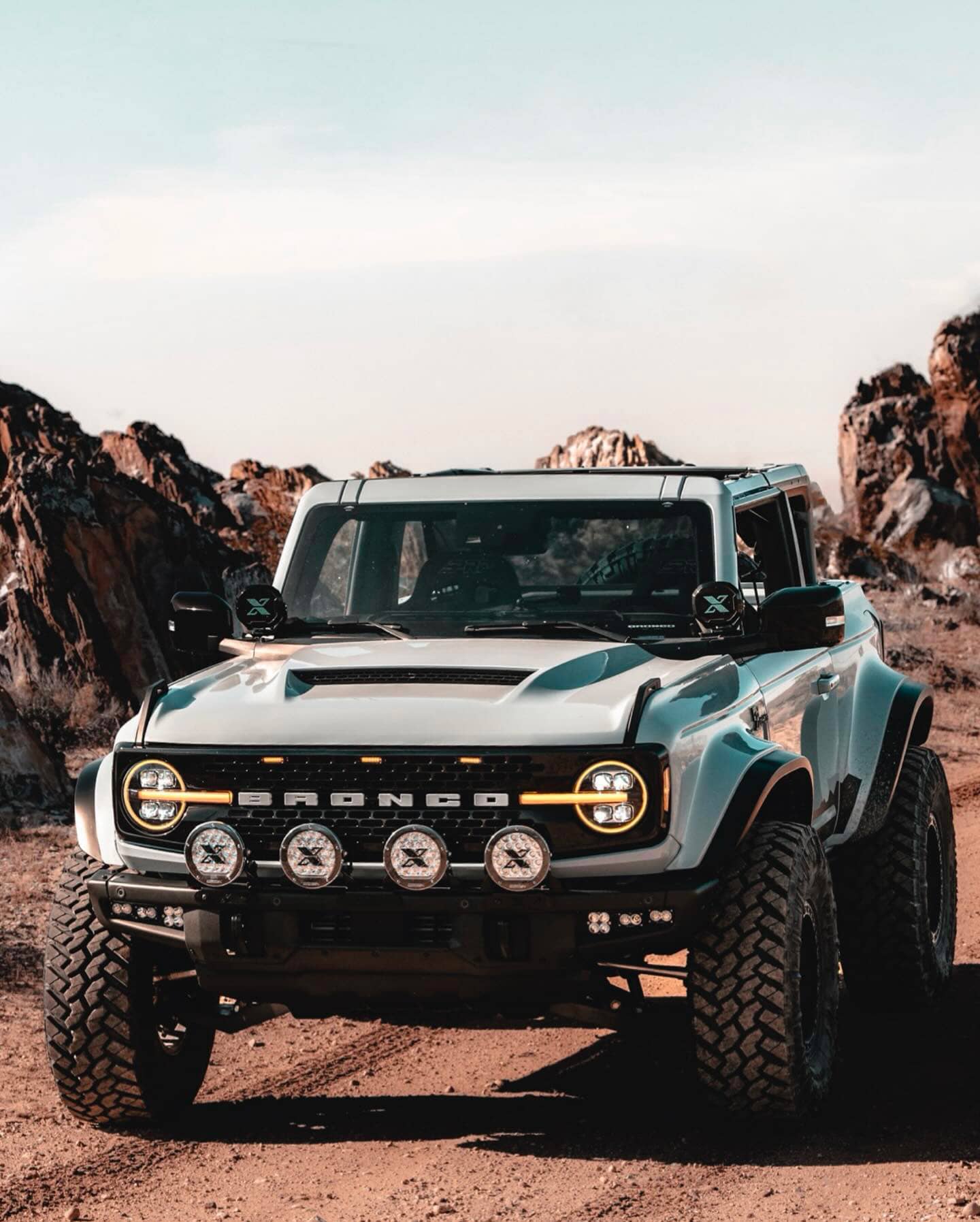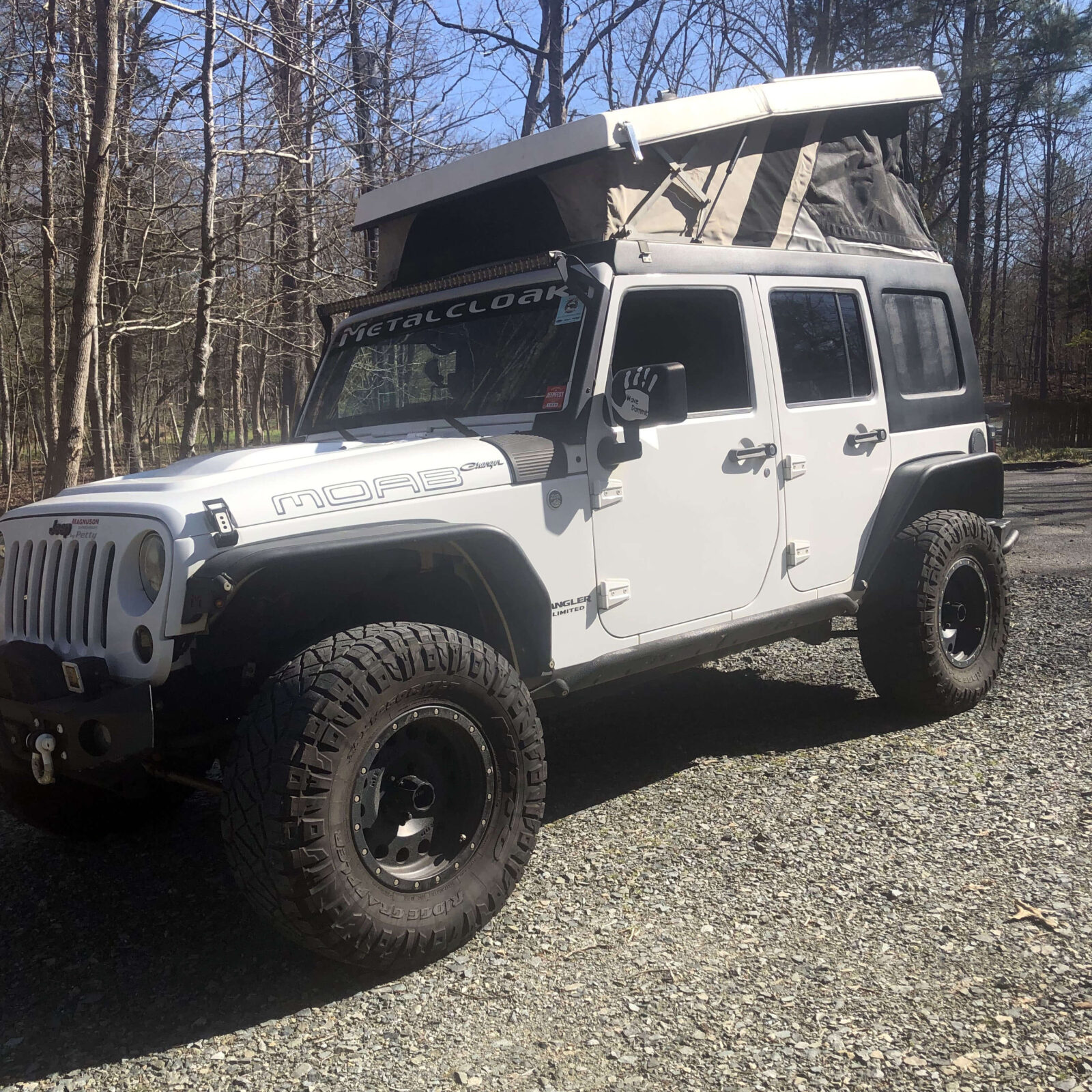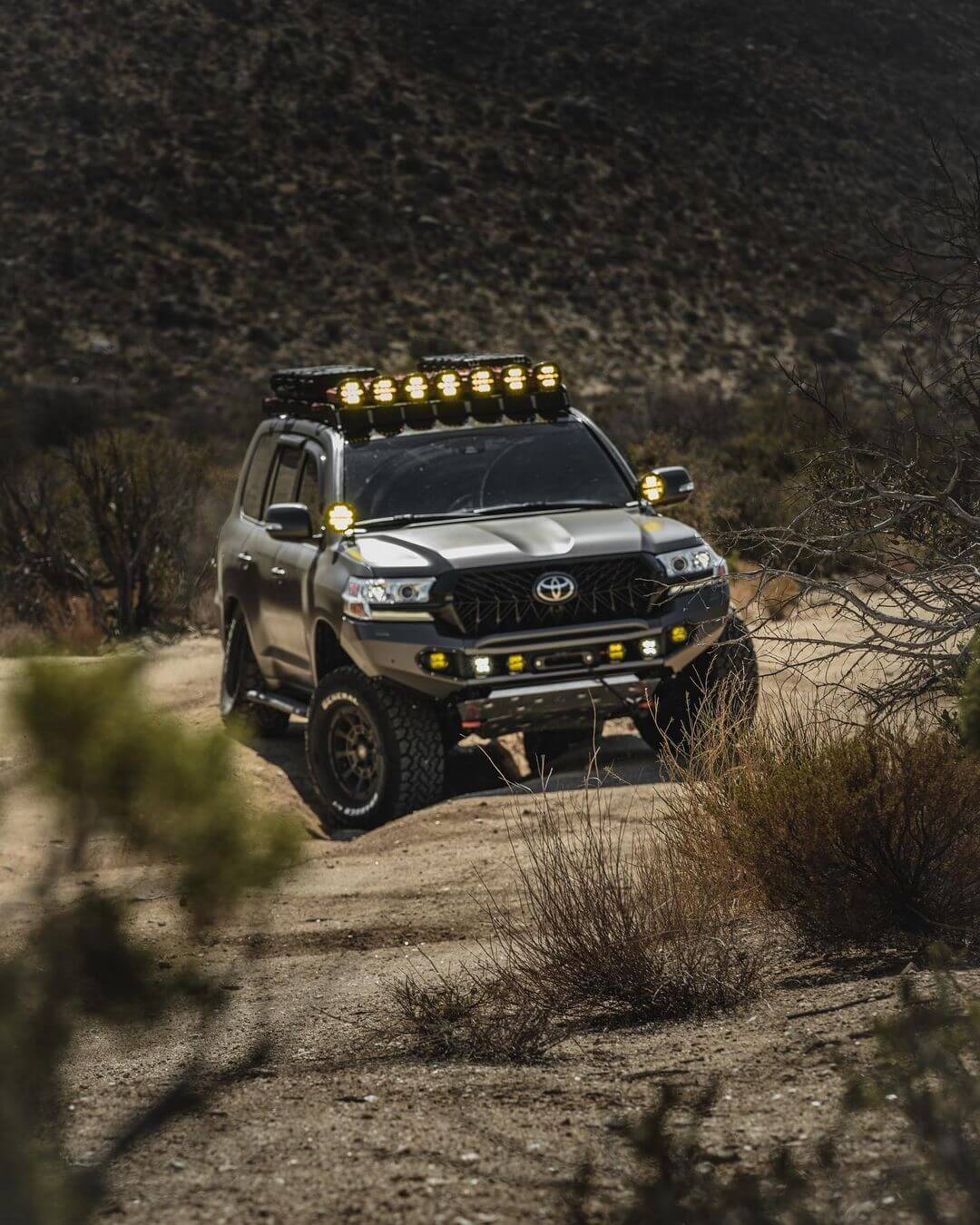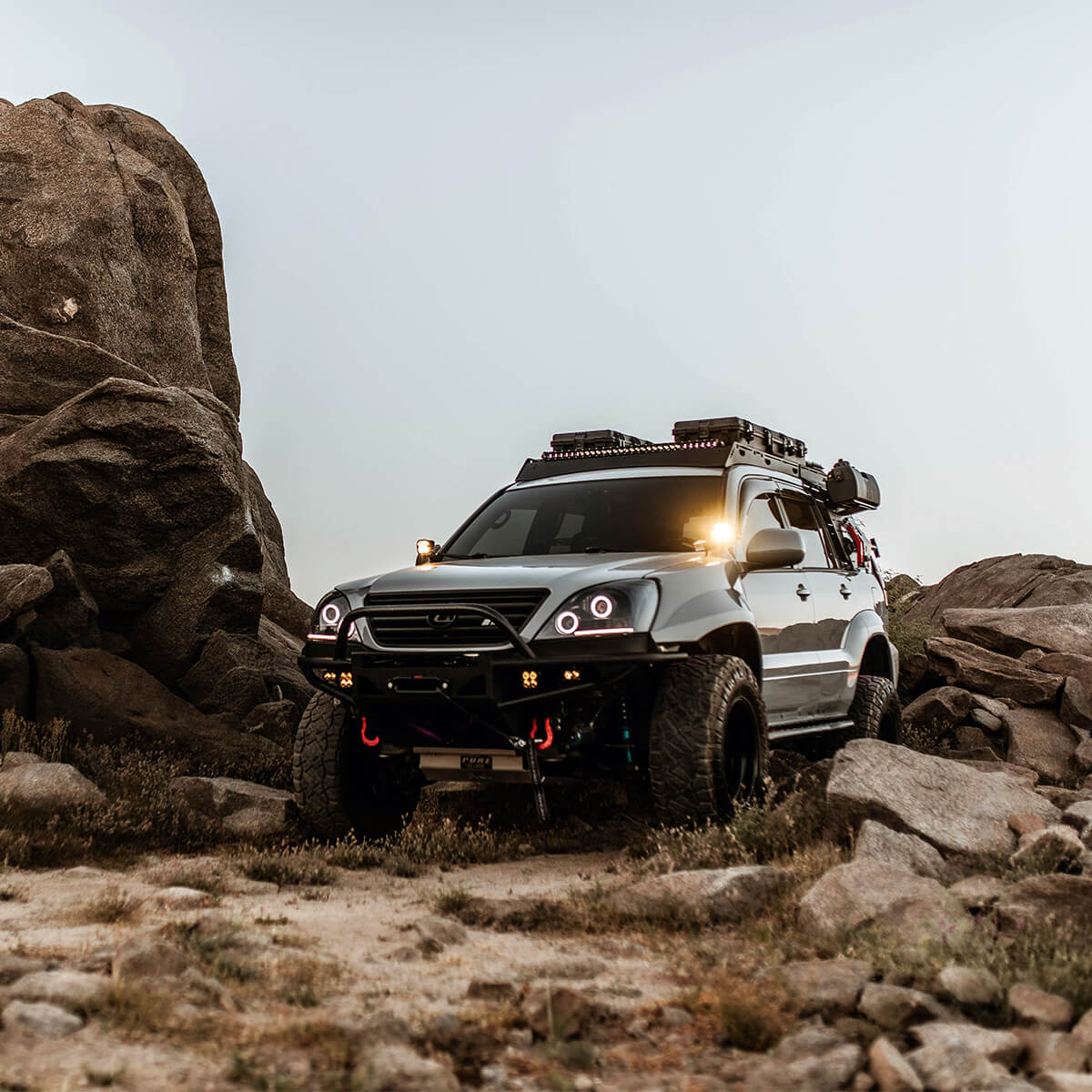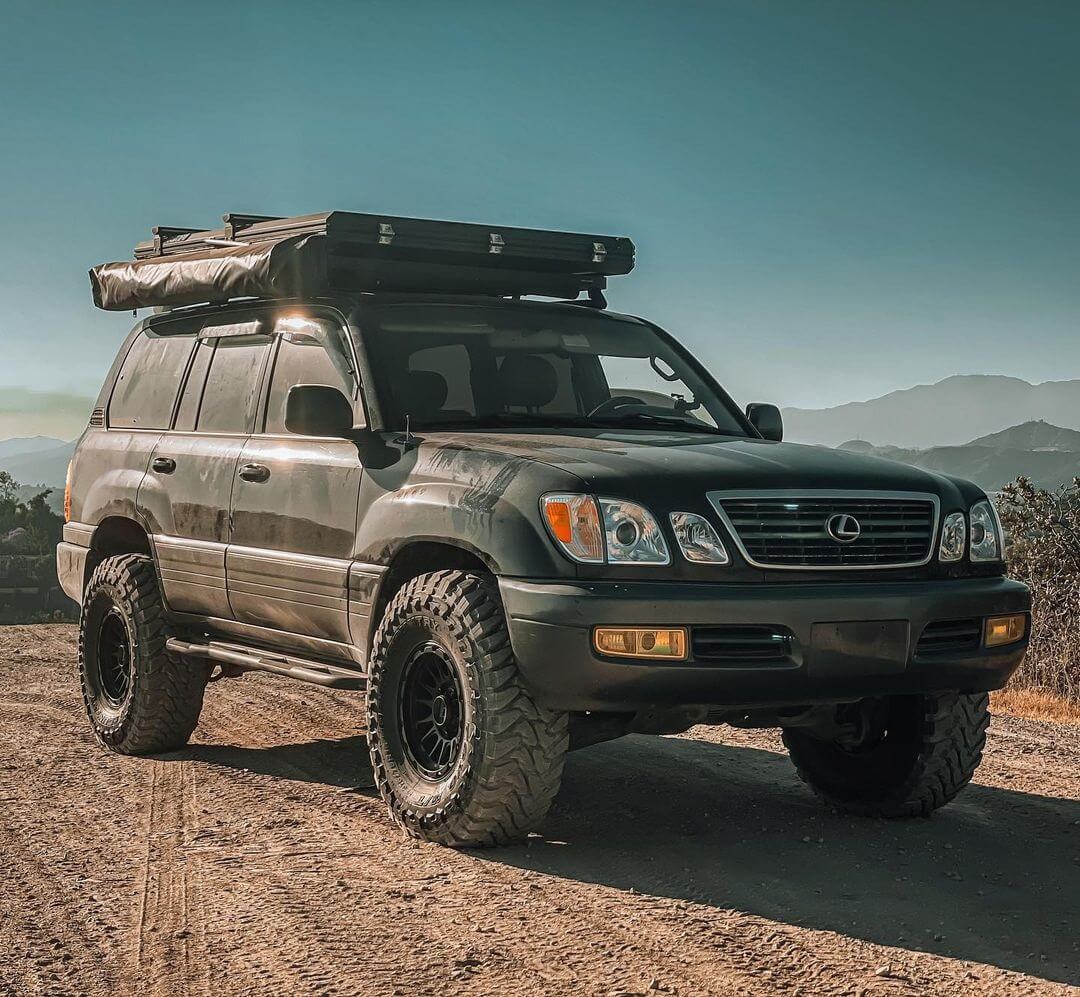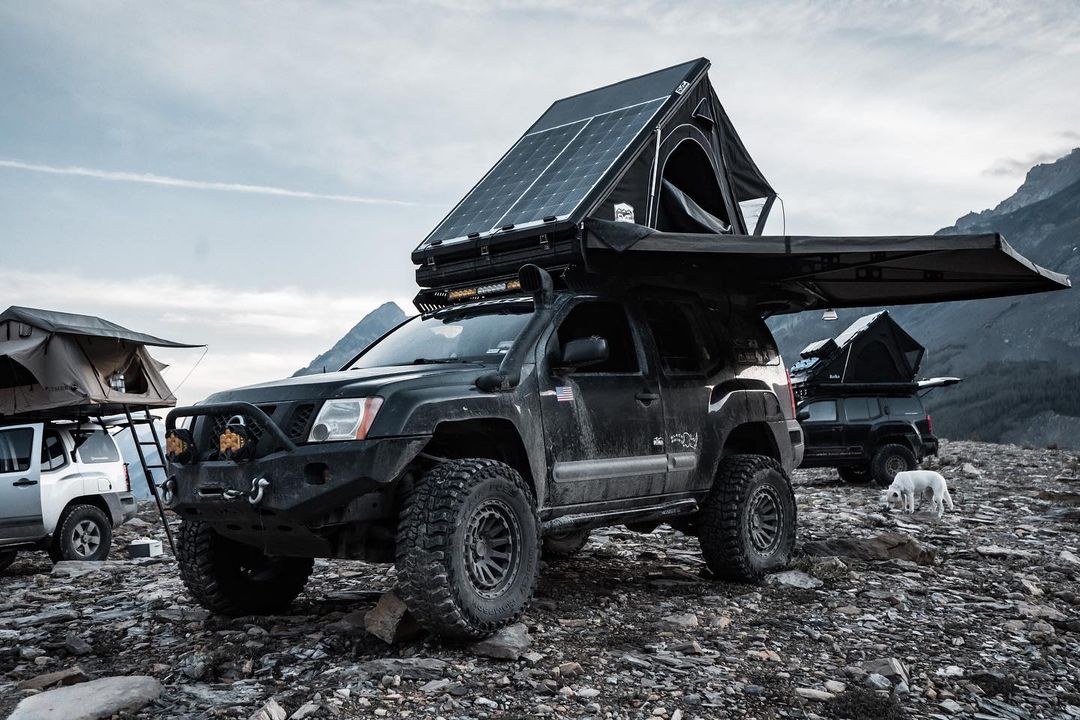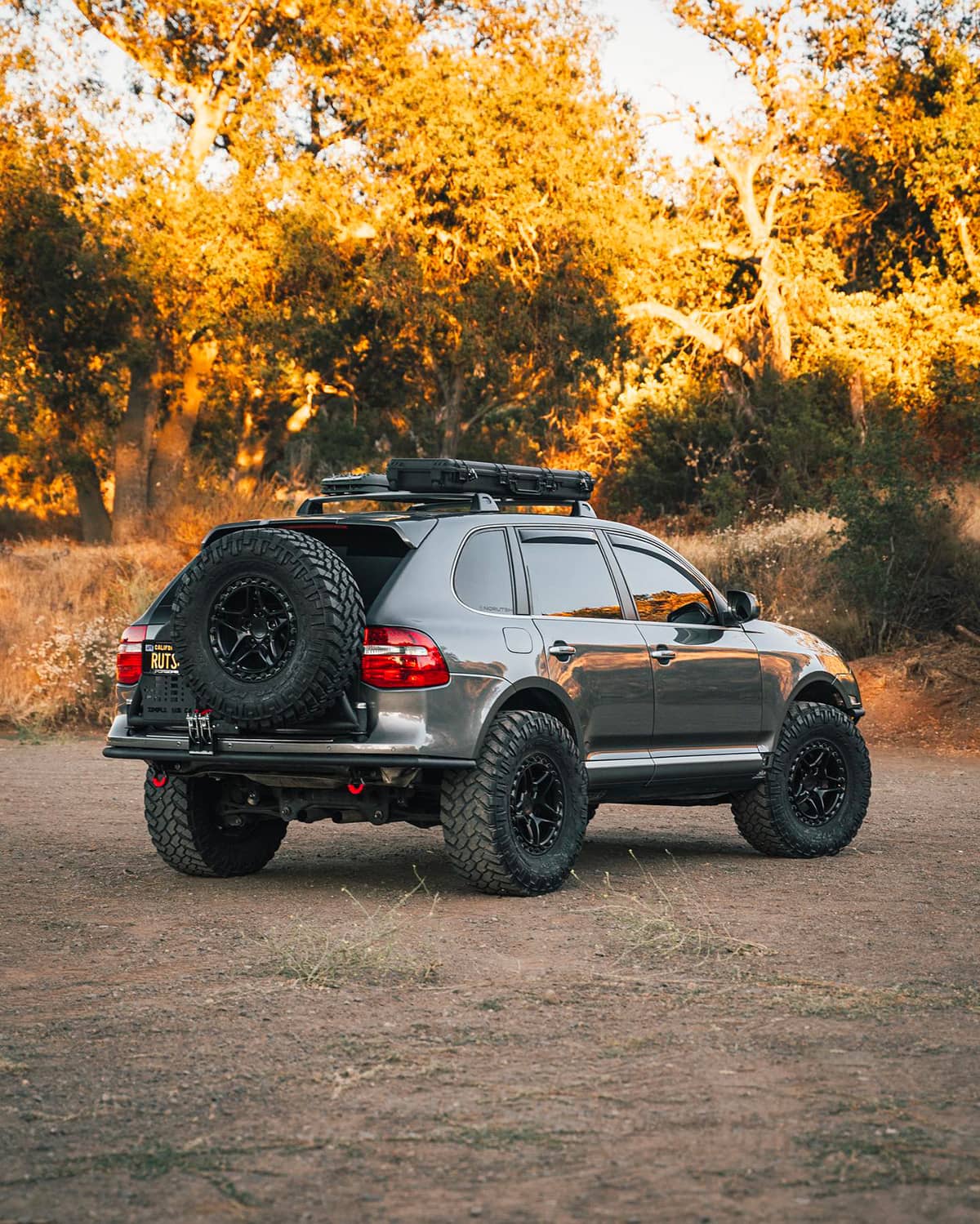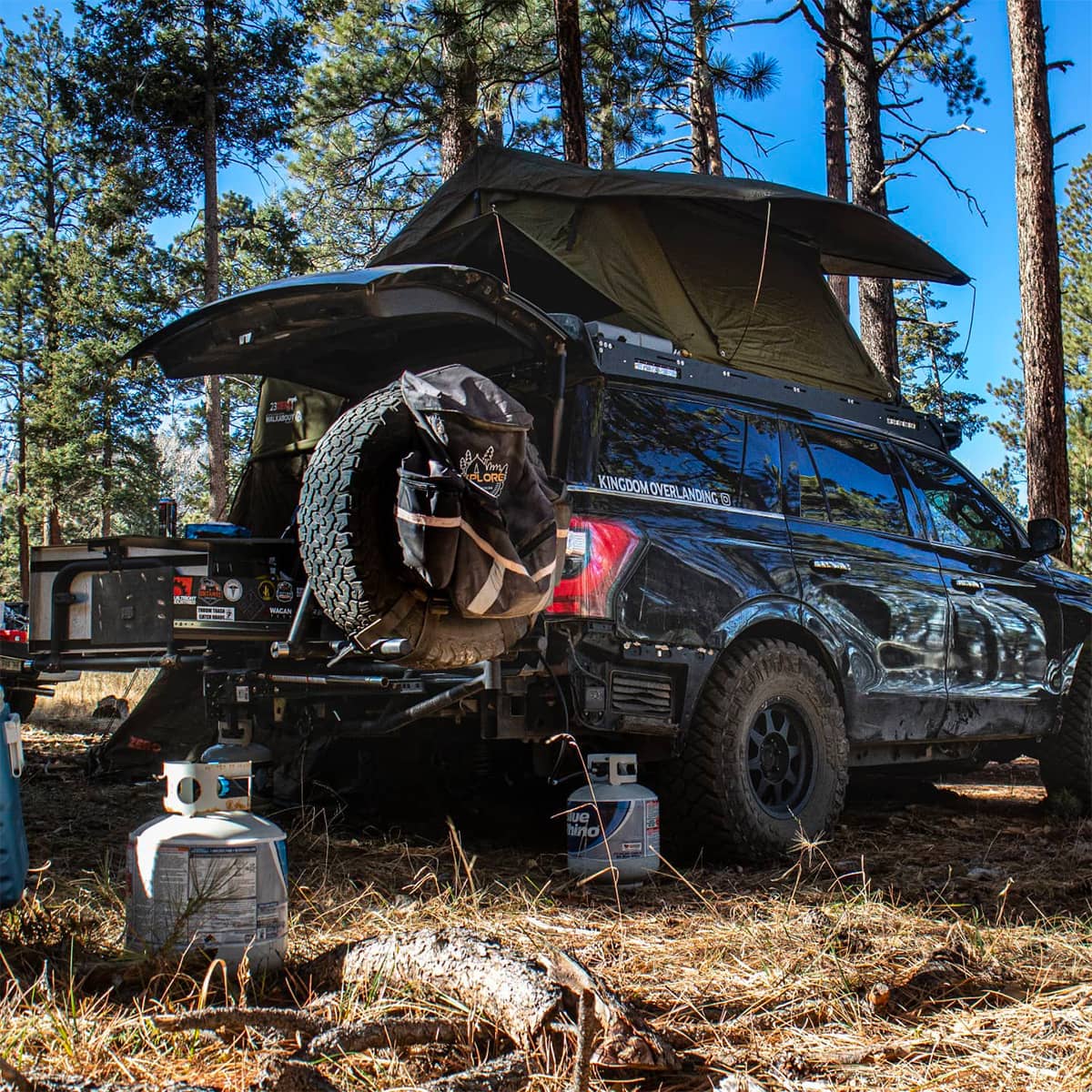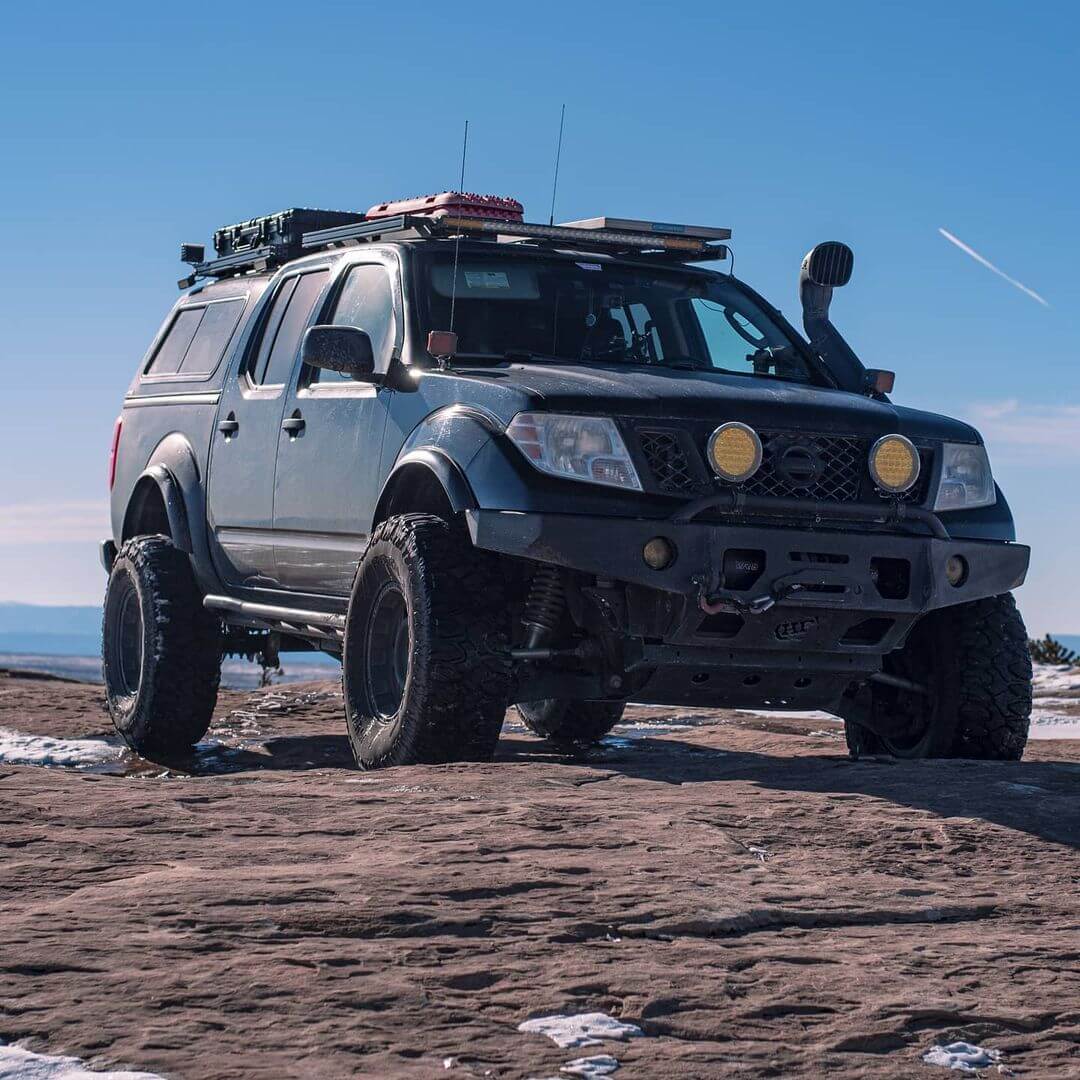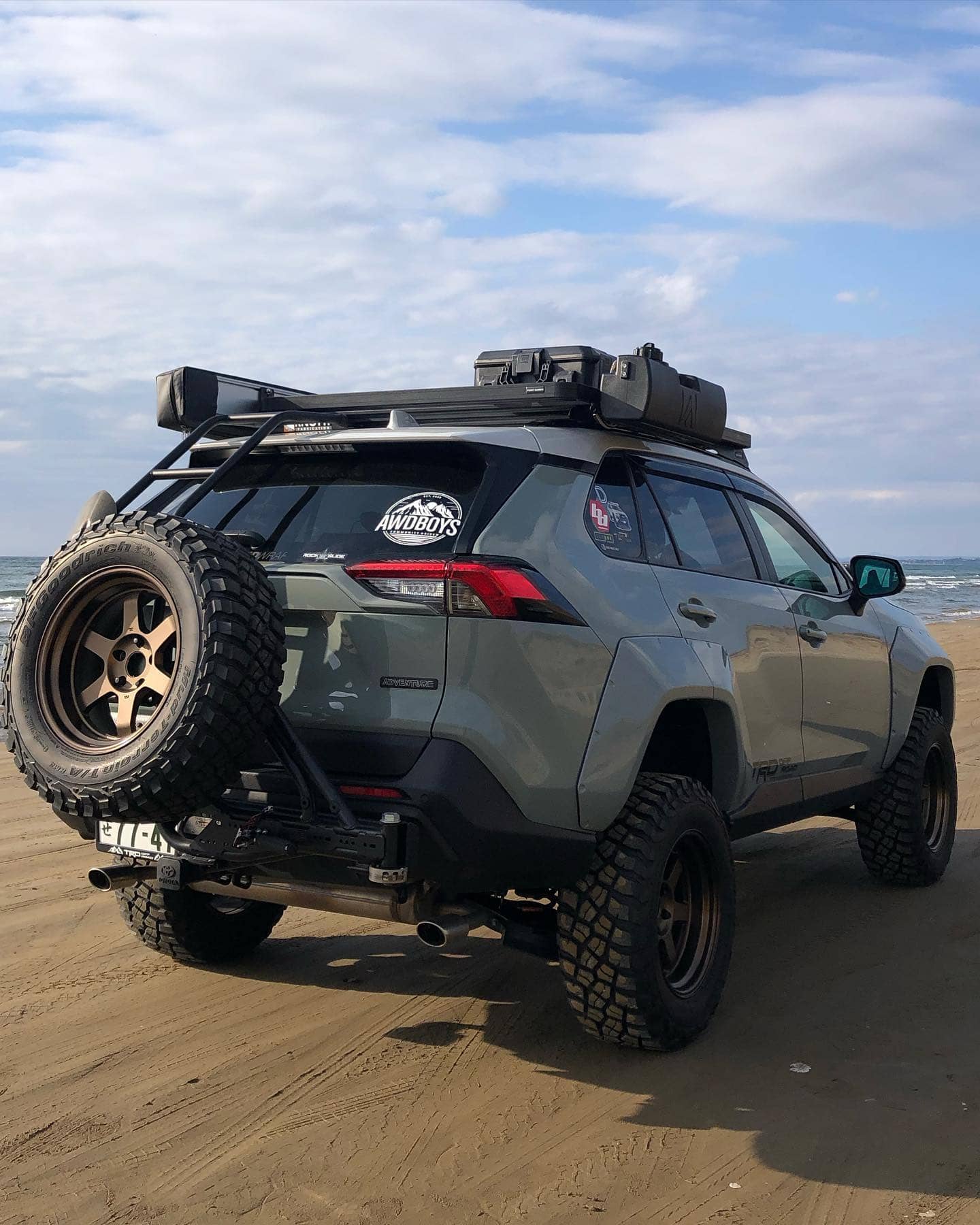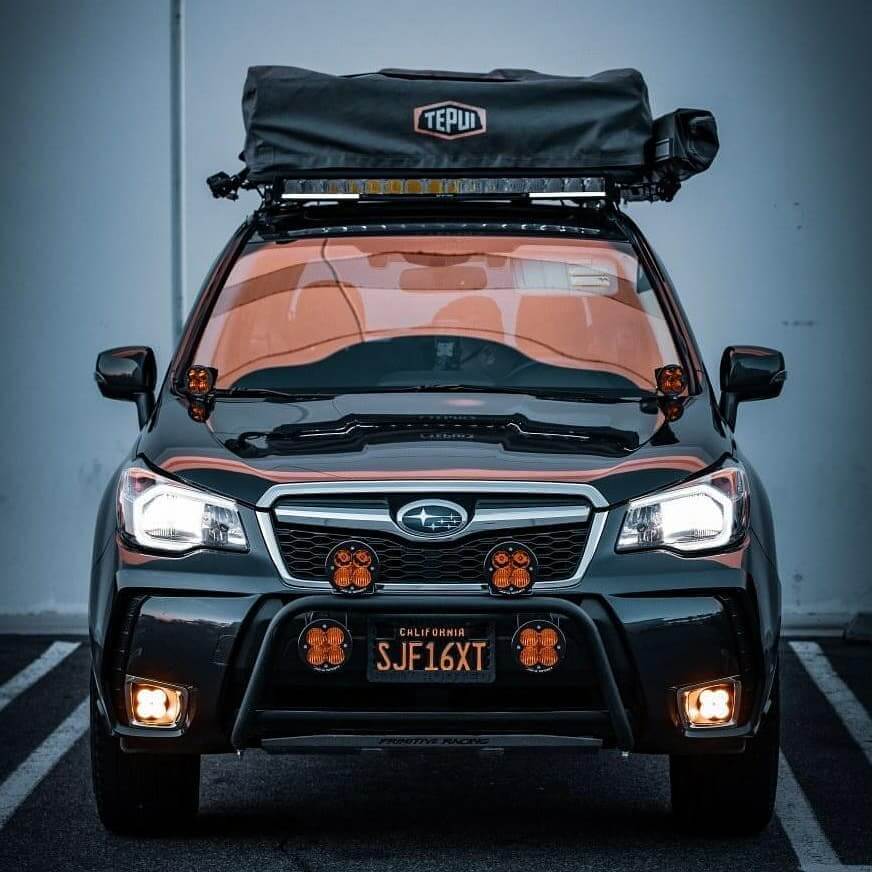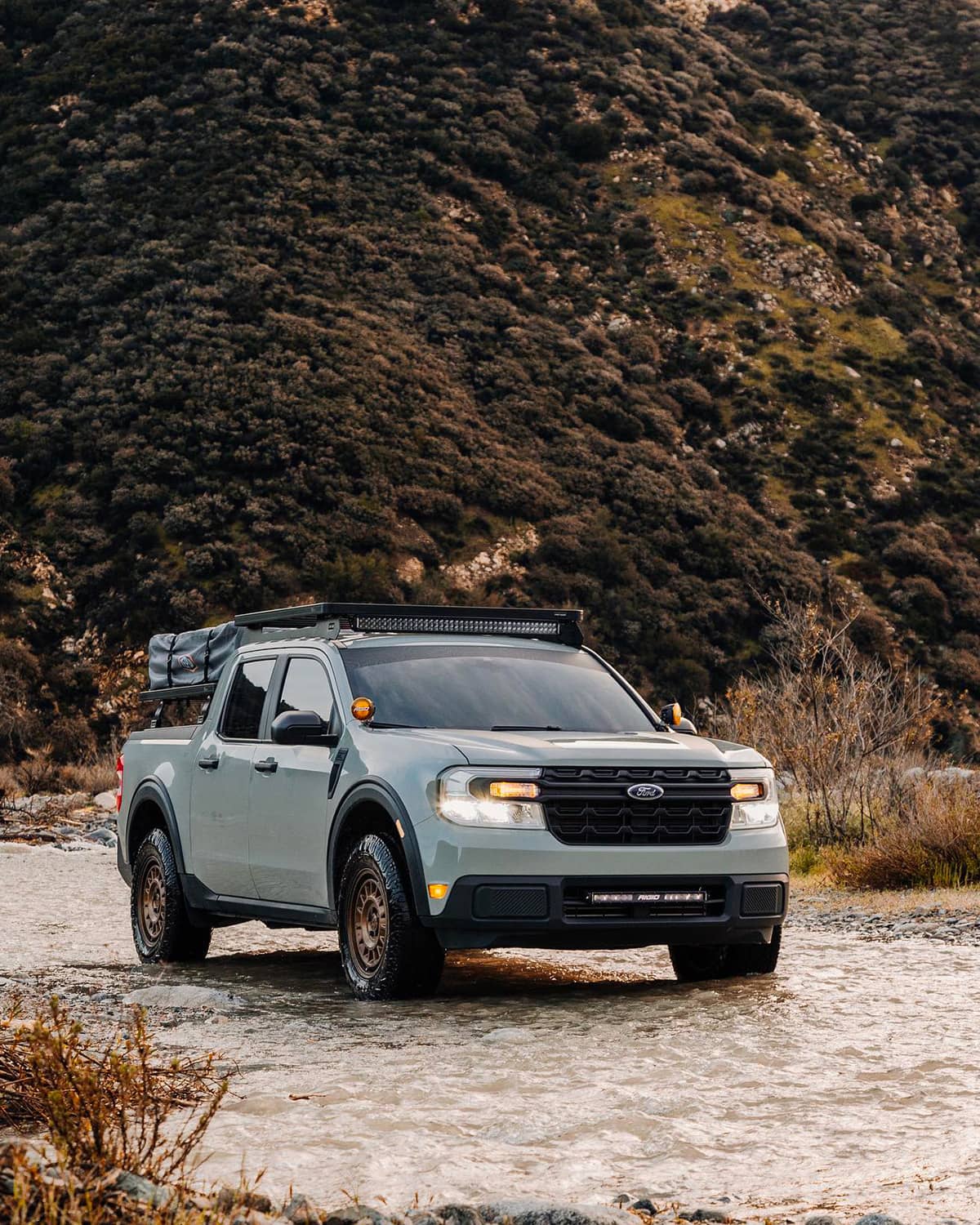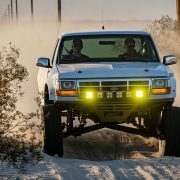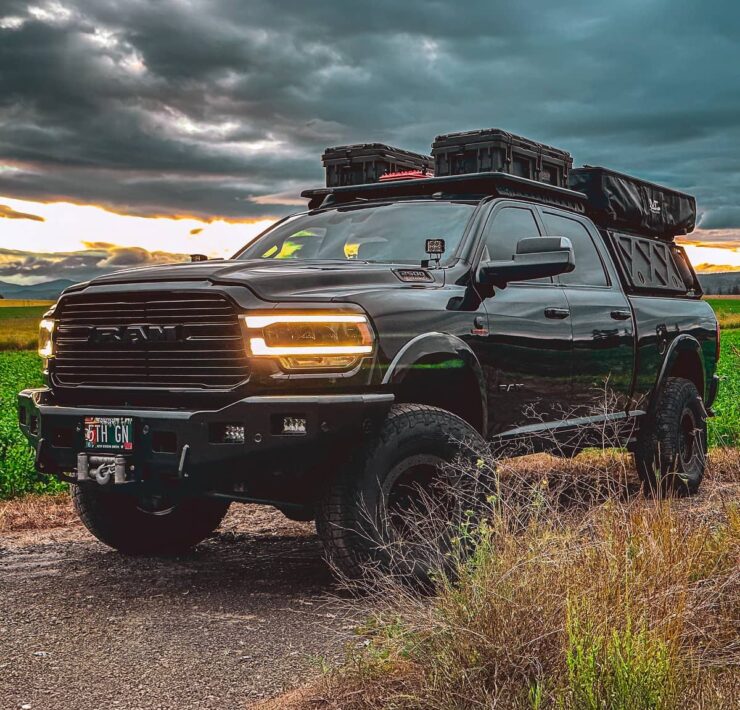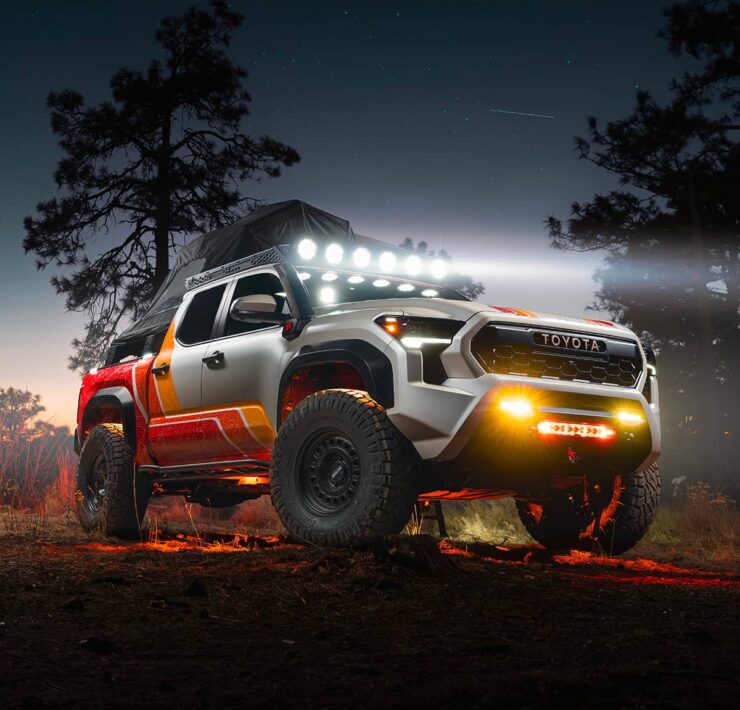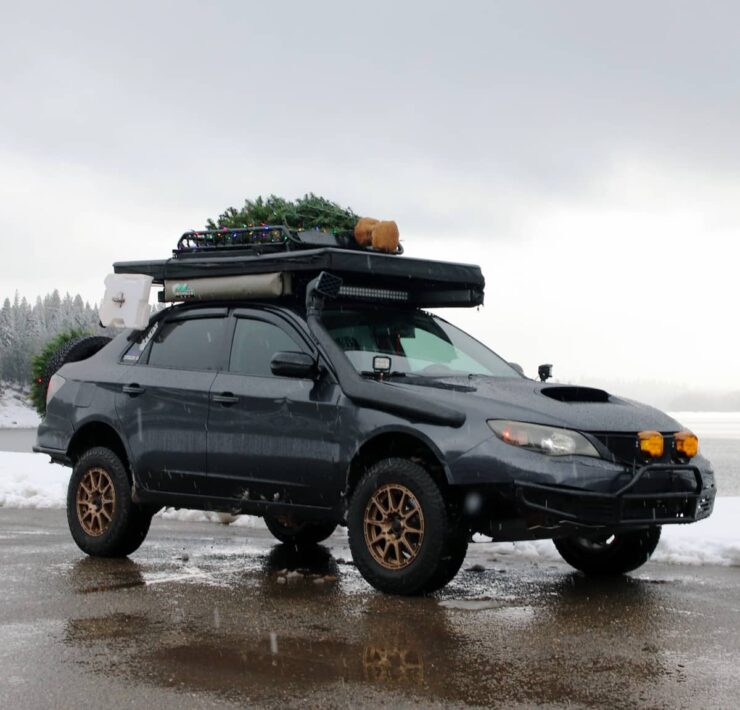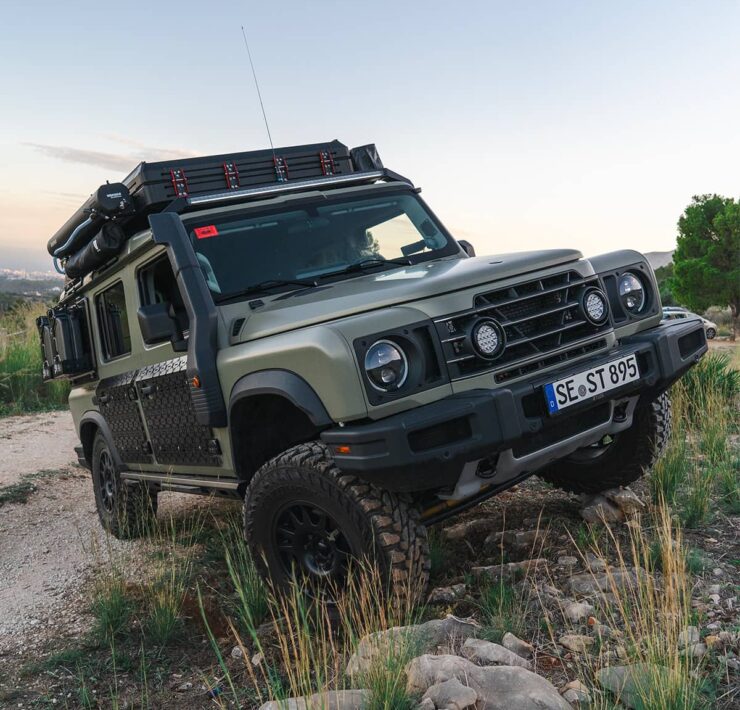Home » Articles » Best Overland Vehicles for any Budget – Offroadium Guide
Best Overland Vehicles for any Budget – Offroadium Guide
- Consider your own priorities when choosing an overland vehicle
- Body-on-frame 4x4 SUVs are the best for most overland travels
- Choose 4x4 trucks and Full-size SUVs to maximize cargo space and seating
- AWD crossovers can be used for overlanding in light off-road conditions
- Capabilities can be greatly expanded with aftermarket modifications
- Used vehicles can offer a lot of value if purchased wisely
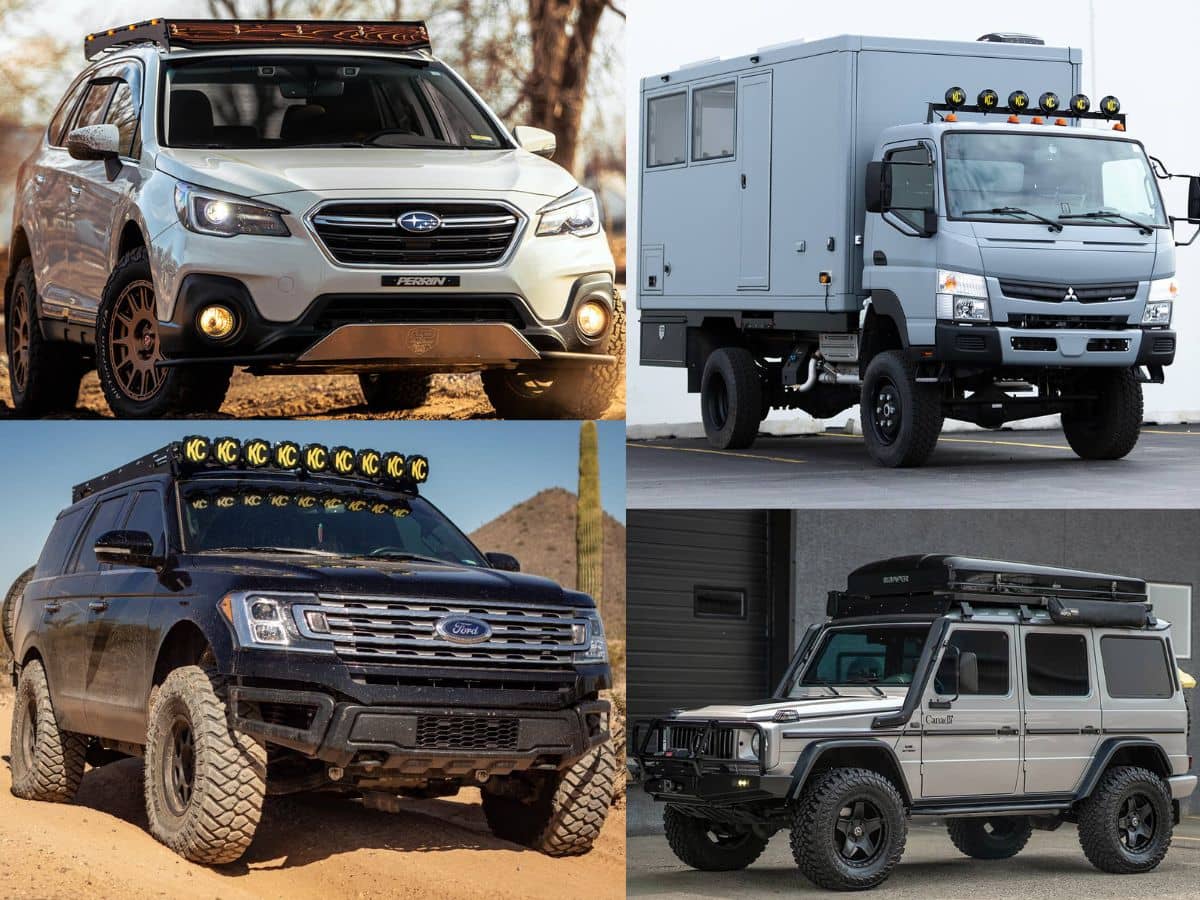
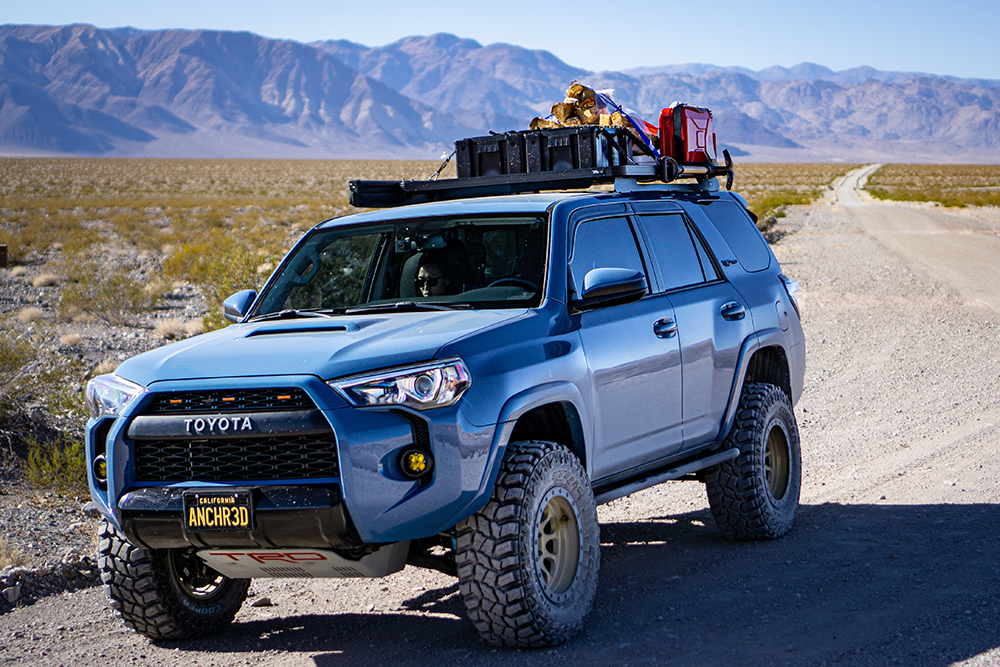
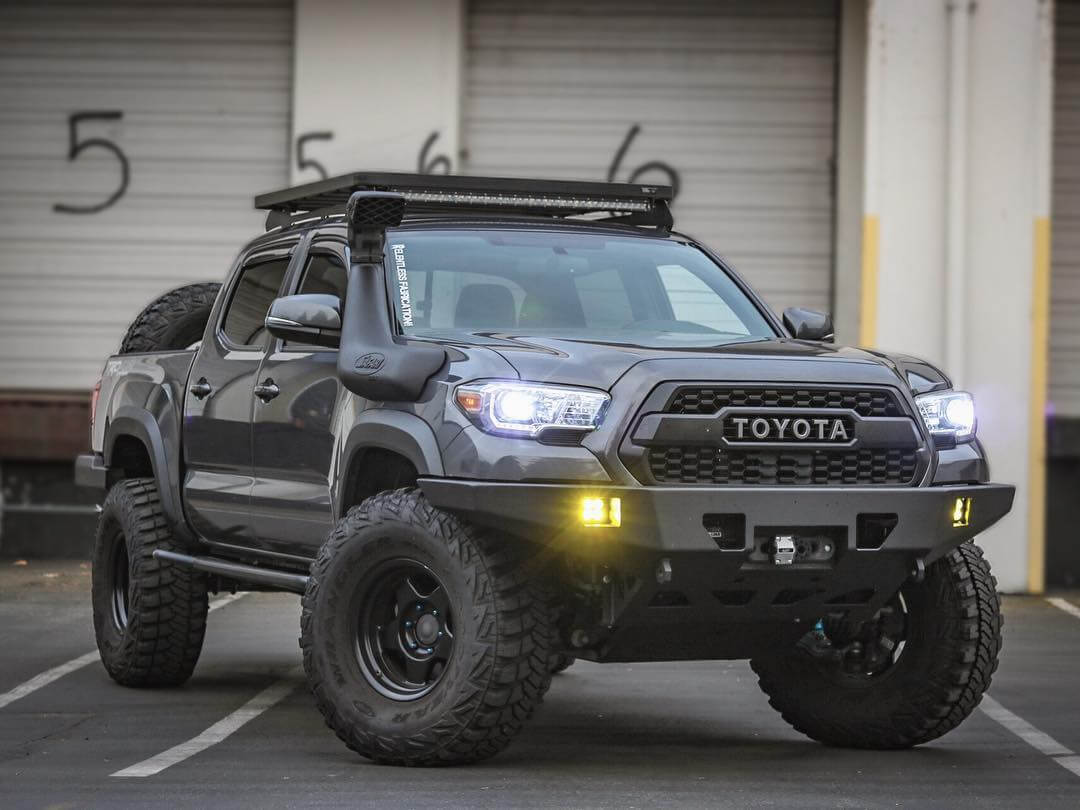
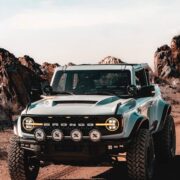
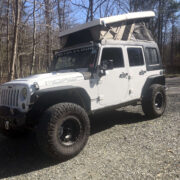 +11
+11 Best Overland Vehicles for any Budget – Offroadium Guide
The Toyota 4Runner 5th generation is considered one of the top SUVs for overlanding due to its impressive off-road capabilities and spacious interior.
With 9.6 inches of stock ground clearance, the 4Runner can easily traverse rocky terrain and steep inclines. (Find out more about this 4Runner build in our feature.)
An available rear differential locker provides enhanced traction in sticky situations by distributing power evenly between both rear wheels.
The 4Runner can also accommodate larger 33 to 35 inch tires when equipped with a suspension lift, allowing it to roll over large obstacles with ease.
With up to 88 cubic feet of cargo space when the rear seats are folded down, there is ample room for gear, supplies, and creature comforts on extended overlanding trips.
The 4Runner's body-on-frame construction and V6 engine provide durability and power for the long haul over rugged landscapes. Its balance of ruggedness, cargo capacity, and performance make the 5th generation 4Runner one of the top choices for overland adventurers.
Best Overland Vehicles for any Budget – Offroadium Guide
As we see from our detailed comparison table, the 2022+ Ford Bronco is leading the pack when it comes to conquering rough trails. One of its standout features is its large ground clearance, which changes depending on which version you choose, going from 8.4 to 11.6 inches. Plus, it offers the biggest tires right from the start, with sizes ranging from 33 to 37 inches, making it a one-of-a-kind option in the 4x4 market. You can read more about this Bronco build in one of our features.
Best Overland Vehicles for any Budget – Offroadium Guide
Overlanding has been a popular trend in recent years, and it’s easy to see why. It allows people to satisfy their natural desire to explore and connect with nature while enjoying driving on rough terrain. Fortunately, the market for new and used off-road vehicles offers many options for those interested in 4×4 adventures. In this article, we’ve compiled a list of the best overlanding vehicles based on their capabilities and potential for modifications.
Over the past 5 years, we have featured dozens of different off-road vehicle builds that illustrate what can be achieved with the right modifications. Our comprehensive guide aims to help you prioritize your key needs and find the best overland vehicle that would satisfy your specific requirements.
Best overland vehicles are the ones that have optimal balance of the off-road capabilities, reliability, comfort and cargo space for travel gear. Depending on size/class it can be a new Ford Bronco, Toyota 4Runner/Tacoma, Land Cruiser, Ford F250/Excursion, Mercedes Sprinter or bigger 4×4 box truck conversions.
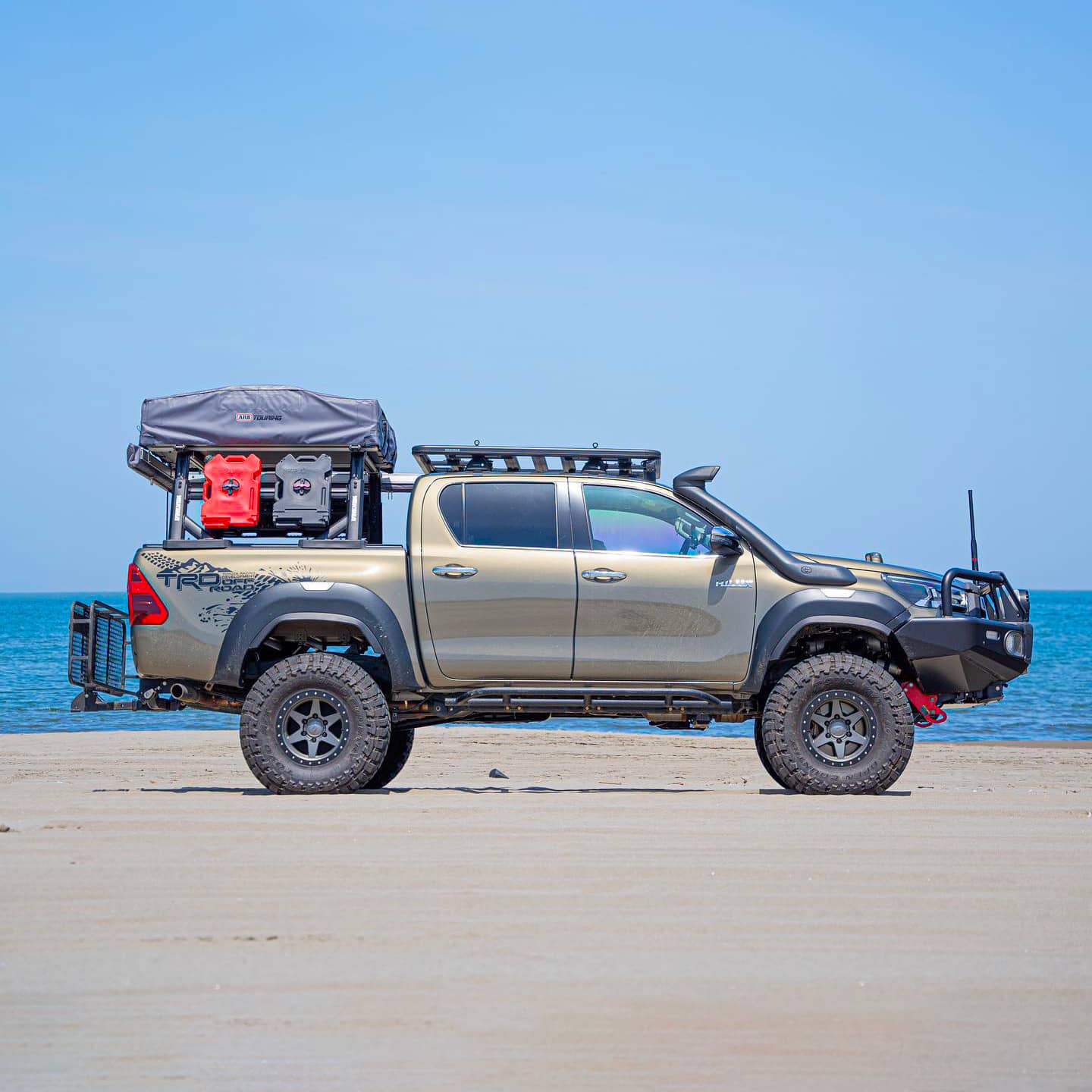
Read on to find what are the key factors to consider when choosing a vehicle for overlanding and what are the best candidates available on the market of new and used vehicles!
Table of Contents
ToggleBest Overland Vehicles by Type
“There is no one-size-fits-all solution since everyone’s needs and preferences differ”.
However, based on 110+ Overland builds we’ve featured on Offroadium during the last years, our editorial team has come up with a list of best overlanding vehicles by type and purpose:
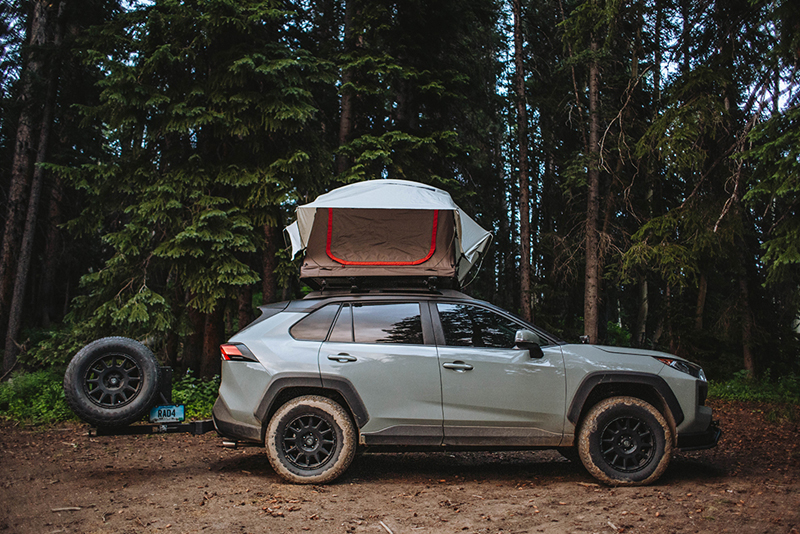
Crossovers (Best for Beginners)
Key Considerations: sufficient off-road capabilities, ample cargo space, daily driving convenience & versatility, good MPG, safety and ease of operation for beginners.
- Toyota Rav4 2018 & Up – 8.6” ground clearance, Dynamic Torque Vectoring AWD, Max tire size with 2” lift – 30,5”, 37.5/69.7 cubic feet of cargo space.
- Subaru Forester SJ/SK 2014& UP- 8.7”/9.2” (Wilderness) ground clearance, X-Mode AWD, max tire size with 2” lift – 29.5”, 31.7/76.1 cubic feet of cargo space.
- Honda Passport 2018 & Up – 8.1″ Ground clearance, i-VTM4 AWD, Max tire size with a 3″ lift 32″(!), 41,2/77 cubic feet of cargo space.
Editorial Opinion: Excellent introductory overlanding vehicles for light to moderate off-roading, solo or pair trips. Their versatility, comfort, fuel efficiency, and maneuverability make them ideal for exploring local trails and remote camping spots. Crossovers allow beginners to start experiencing overlanding and off-road adventures without the complexity or costs of larger rigs. AWD crossovers are surprisingly capable off-road if equipped with proper tires, yet there are certain limitations compared to 4WD SUVs.
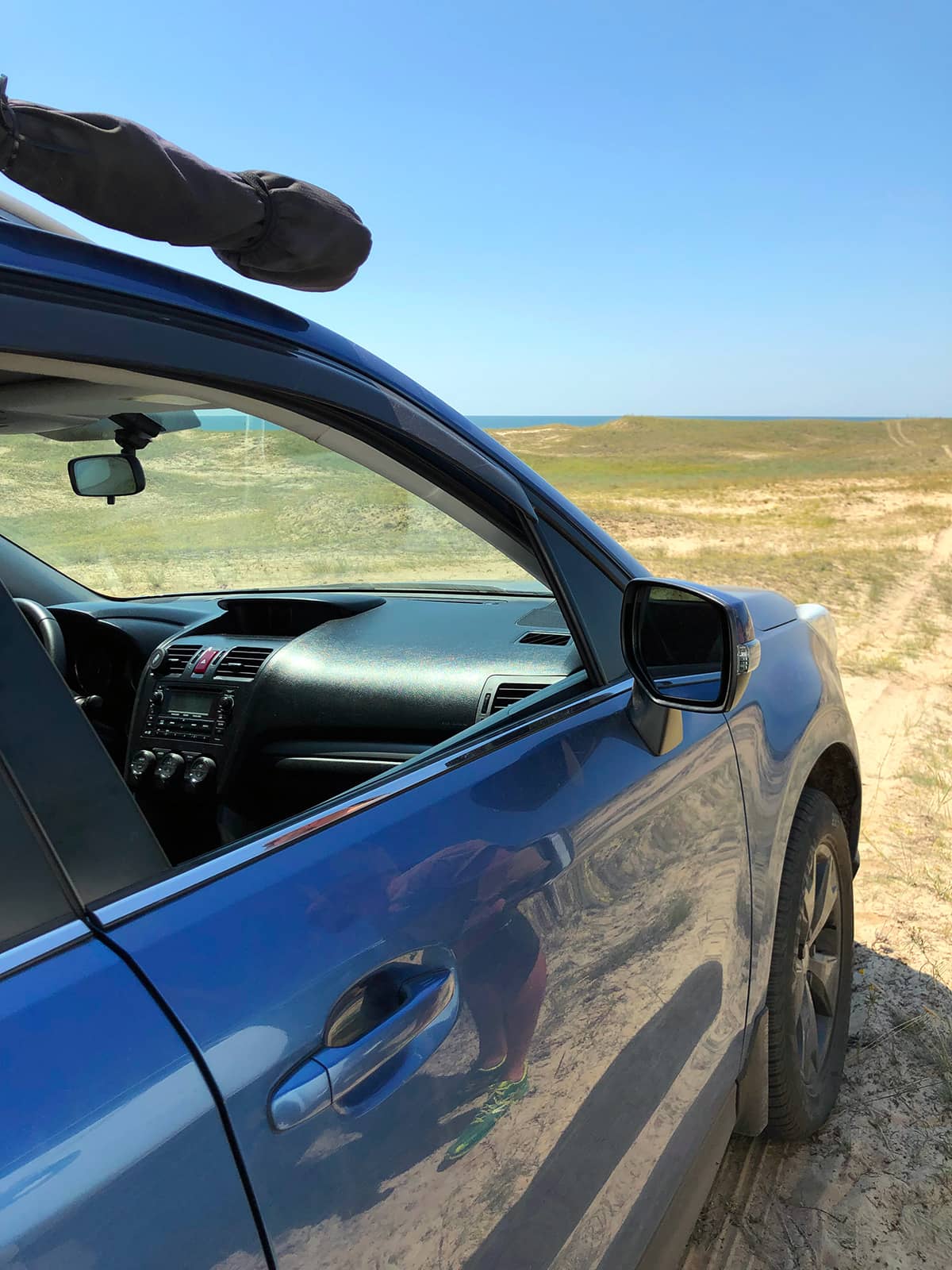
“I prefer to sleep inside of the car instead of using an RTT, and Subaru Forester SJ is ideal for that. As for the off-road capabilities, they are good, and will most definitely be enough if you are not looking for a trouble. Even though the X-mod is great, according to my observations, it will not compare to the good old locking differential in extreme off-road conditions. The trick of airing down will help to improve traction (especially in deep sand), but make sure the side profile on your tires is tall enough”. – Matt Grabli
Pros & Cons compared to 4×4 SUVs and Midsize Trucks
- Not as capable
- Not as durable
- More affordable
- Better MPG
- Better on road handling and versatility as daily driver
4×4 SUVs and Midsize Trucks
Key considerations: best off-road capabilities, oversized tire installation, sufficient cargo space, availability o aftermarket upgrades.
- Ford Bronco 2022 & Up – Stock ground clearance 11.6”, Front & Rear lockers are available, Max 33” – 37” tires with lift, inner cargo space 35.6/77.6 cubic feet
- Toyota 4Runner 5th Gen – Stock ground clearance 9.6”, Rear locker is available, Max 33” – 35” tires with lift, inner cargo space 46/88 cubic feet
- Toyota Tacoma 3rd & 4th Gen – Stock ground clearance 9.4”, Rear locker is available, Max 33” – 35” tires with lift, bed sizes: 5ft/6ft
- Jeep Wrangler JK/JL – Stock ground clearance 10.8”, Front & Rear lockers are available, Max 33” – 37” tires with lift, inner cargo space 31/72 cubic feet
- Jeep Gladiator – Stock ground clearance 11.1”, Rear locker is available, Max 33” – 37” tires with lift, bed sizes: 5ft/6ft
- Lexus GX460/GX470 – Stock ground clearance 8.1”, Center locker, Max 33” – 34” tires with lift, inner cargo space 13/49/77 cubic feet
- Mercedes G-Wagon – Stock ground clearance 9.5”, Front, Center and Rear lockers(!), Max 33” – 35” tires with lift, inner cargo space 38/68 cubic feet

Editorial Opinion: These rigs offer capabilities for mild to aggressive off-roading depending on the modifications. They are ideal overland vehicles for 1-2 adults, possibly with kids, to take longer trips. They can also accommodate up to 4 adults for shorter excursions that require less cargo capacity. Choose one of these if off-road capabilities are your key priority, as they can take you deeper into the wild than any other vehicle class.
Pros & Cons compared to Full size trucks & SUV
- More maneuverable on tight trails
- More affordable
- Worse towing capacity
- Less cargo space
Full-Size SUVs
Key Considerations: Seating space, cargo pace, off-road capabilities, oversized tire installation, aftermarket support.
- Lexus LX/Toyota Land Cruiser 200 – Stock ground clearance 9.1”, Center locker + TRAC 4WD, Max 33” – 35” tires with lift, inner cargo space __ cubic feet
- Ford Expedition – Stock ground clearance 9.8”, Rear locking differential, Max 33” – 37” tires with lift, inner cargo space 104/63 cubic feet
- Toyota Sequoia – Stock ground clearance 9.9”, Rear locker is available on new models, Max 33” – 35” tires with lift, inner cargo space 120/66 cubic feet
- Chevy Tahoe/Suburban – Stock ground clearance 9.5”, Rear locking differential, Max 33” – 35” tires with lift, inner cargo space 94/121 cubic feet
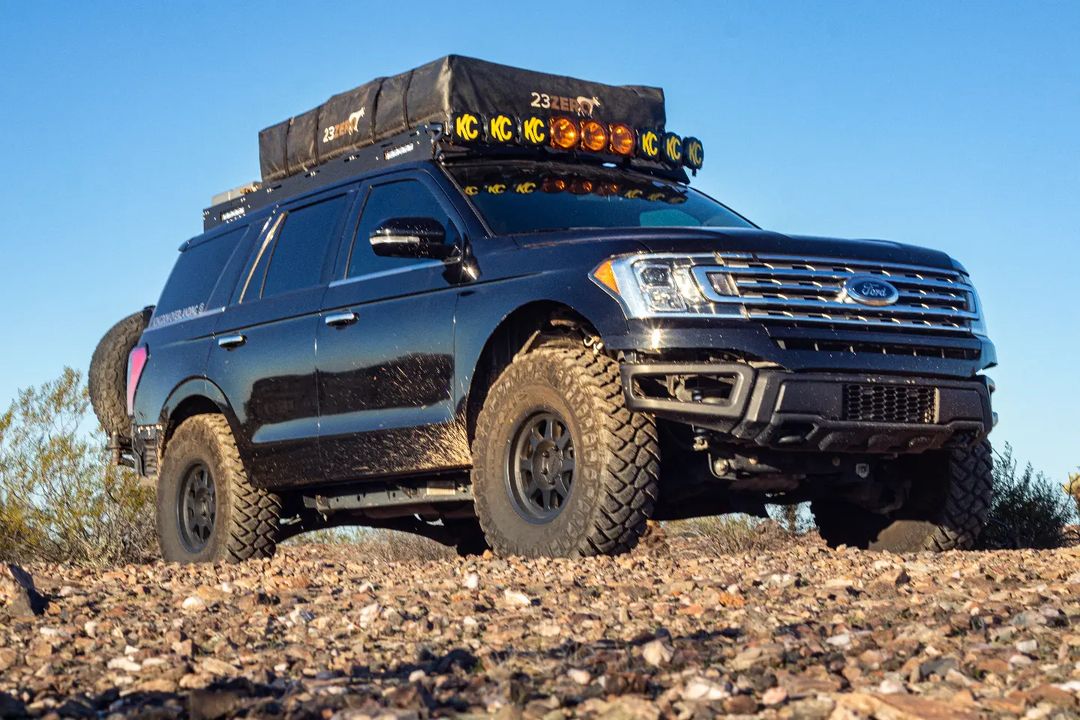
Editorial Opinion: Ideal for longer expeditions and/or larger groups thanks to expanded cargo capacity and optimal off-road capabilities. Keep in mind that added size and weight may be a disadvantage on some advanced and highly technical off-road trails.
Pros & Cons compared to Vans
- More off-road capable
- Better towing capacity
- Worse MPG
- Less interior living space
Full-Size Trucks
Key Considerations: off-road capabilities, oversized tire installation, aftermarket support, bed space to arrange cargo storage/kitchen and/or sleeping space.
- Ford F-150 – Stock ground clearance 11.5”, Front & rear locking differentials, Max 35”- 37” tires from factory, inner cargo space 52.8 cubic feet
- Toyota Tundra TRD Pro – Stock ground clearance 9.7”, Rear locker + A-TRAC 4WD, Max 33”-35” tires with lift, inner cargo space 66.7 cubic feet
- Chevy Silverado 1500 Z71 – Stock ground clearance 8.7”, G80 locking rear differential, Max 33”-35” tires with lift, inner cargo space 62.9 cubic feet
- Ram 1500 Rebel – Stock ground clearance 10.3”, Electronic locking rear differential, Max 35” tires from factory, inner cargo space 53.9 cubic feet

Editorial Opinion: Capable right off the showroom floor thanks to increased ground clearance and advanced 4WD systems (often with rear lockers). Aftermarket support allows for further enhancement of off-road performance. Overall a great balance of utility, performance, and livability.
Pros & Cons compared to Full-Size SUVs
- More configurable bed space
- Vast Aftermarket support
- Less total interior passenger and cargo volume
- Typically higher priced and less fuel-efficient
Vans
- Ford E350 – Stock ground clearance 8”, Rear locking differential, Max 33” – 35” tires with lift, inner cargo space 260 cubic feet
- Mercedes Sprinter – Stock ground clearance 7.4”, Part time 4WD, Max 33” tires with lift, inner cargo space 300 cubic feet
- Mitsubishi Delica – Stock ground clearance 8”, LSD rear differential, Max 33” with lift, inner cargo space 130 cubic feet
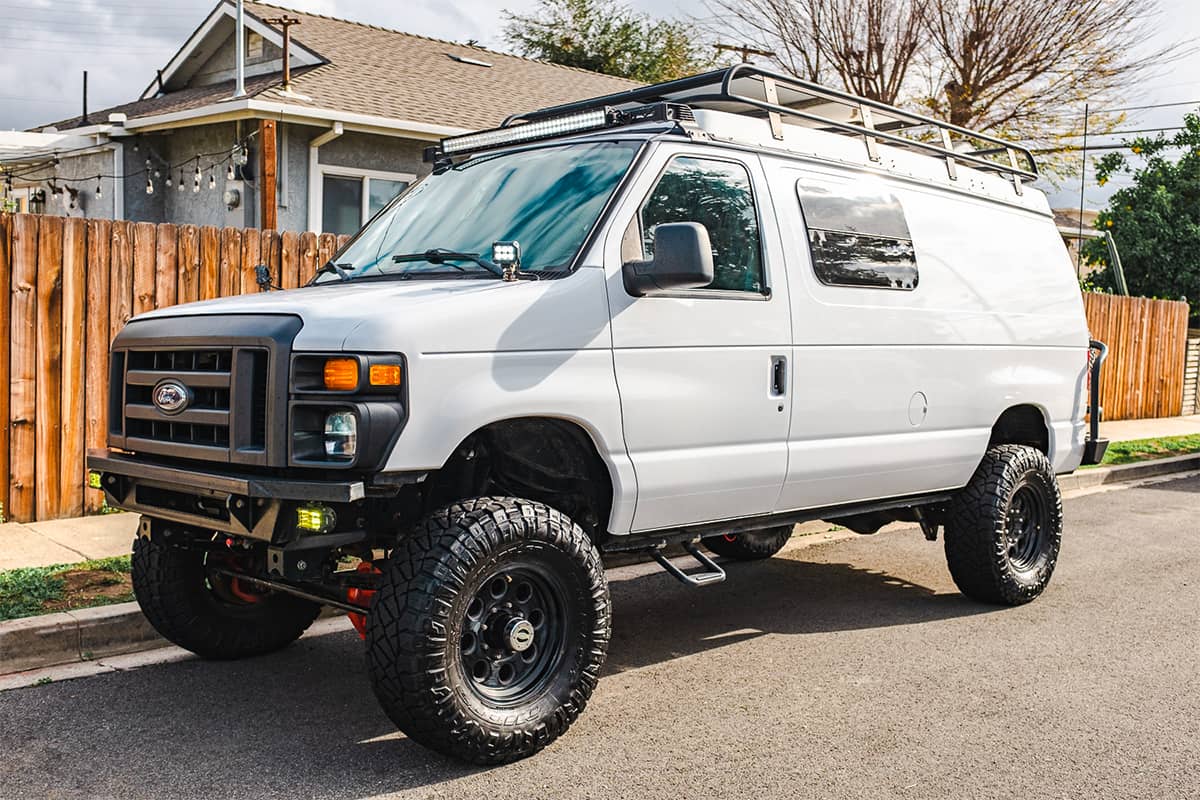
Editorial Opinion: Allow for long, continuous trips and full-time van life on the road. They’re typically used for light/mild off-roading, but there are exceptions. Some lifted E350 can handle very serious trails and keep up with other specialized 4x4s.
4×4 box truck conversions
Editorial Opinion: These vehicles offer expansive cargo space that allows you to build a completely self-sufficient mobile home, capable of going off-road and taking you anywhere regardless of road conditions. Their ample storage and customization potential make them ideal for extended overlanding journeys.
- Earthroamer XV-LTS – $300k+ luxury overland RV, sleeps 4. Based on Ford F350 Super Duty
- Unimog – unparalleled off-road versatility via portal axles. Often used for overlanding in the most extreme conditions.
- Mitsubishi Fuso 4×4 – practical and reliable house on wheels based on a 4×4 chassis cab truck.
Pros: Ultimate cargo capacity, fully enclosed living space, off-road capable with right mods
Cons: Large size limits trails, more expensive, need commercial driver’s license
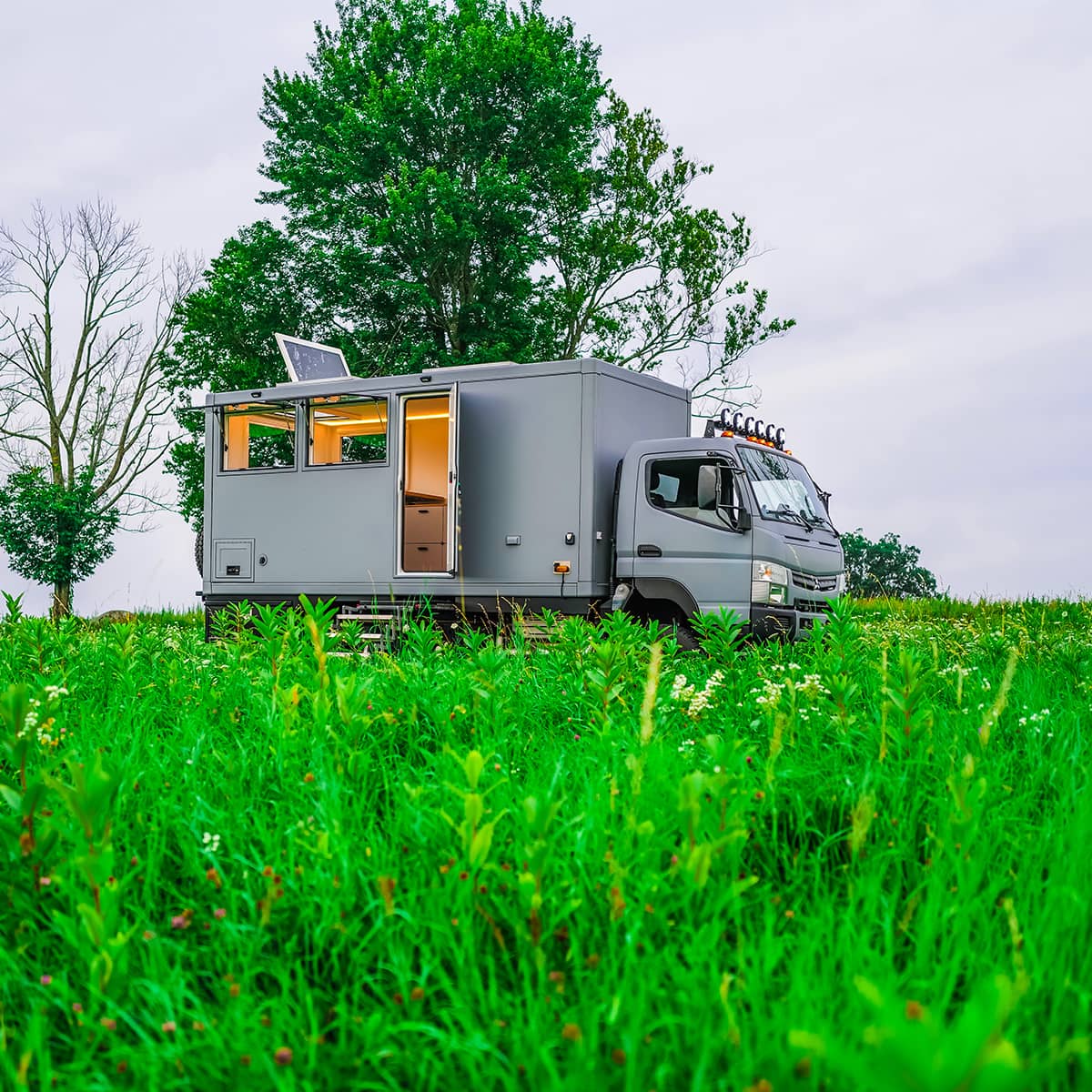
Recognizing these common overlanding platforms and their general capabilities can help match you with a rig that fits your needs and adventure style. The optimal vehicle for your trips depends on your specific requirements and preferences.
| Vehicle | Ground Clearance | Cargo Space | Available Locker(s) | Max Tire Size |
|---|---|---|---|---|
| Toyota 4Runner | 9.6" | 46/88 cu ft | Rear | 33-35" |
| Jeep Wrangler | 10.8" | 31/72 cu ft | Front & Rear | 33-37" |
| Ford Bronco | 11.6" | 35.6/77.6 cu ft | Front & Rear | 33-37" |
| Toyota Tacoma | 9.4" | Bed: 5'/6' ft | Rear | 33-35" |
| Jeep Gladiator | 11.1" | Bed: 5'/6' ft | Rear | 33-37" |
| Ford F-150 | 11.5" | 52.8 cu ft | Front & Rear | 35-37" |
| Toyota Sequoia | 9.9" | 120/66 cu ft | Rear (new models) | 33-35" |
| Ford Expedition | 9.8" | 104/63 cu ft | Rear | 33-37" |
| Mercedes Sprinter | 7.4" | 300 cu ft | Part-time 4WD | 33" |
Best Overland Vehicles By Purpose
Best Used Overland Vehicles on Budget
Key Considerations: Price, Mechanical condition & resource, reliability, Ease & cost of maintenance, good aftermarket support.
- Toyota 4Runner 3rd Gen 2003-2009 – Average cost around $4,995 to $15,900
- Nissan X-Terra 2nd gen 2005-2015 – Average cost around $5,500 – $10,200
- Chevy Tahoe / Suburban GMT800 2000-2006 – Average cost around $6,500 to $10,999
- Toyota Sequoia 1st Generation 2001-2007 – Average cost around $6,500 to $10,090
- Porsche Cayenne / VW Touareg MK1 2003-2009 – Average cost around $8,999 t0 $15,500 (the prices can go up to $50k on rare examples with low mileage, but it’s hardly a good choice for off-road punishment); models with the rear lockers are the most notable.
*The information on pricing is shown for general reference and may change with time. Based on the information from Cargurus, Carfax, and Cars for Sale.
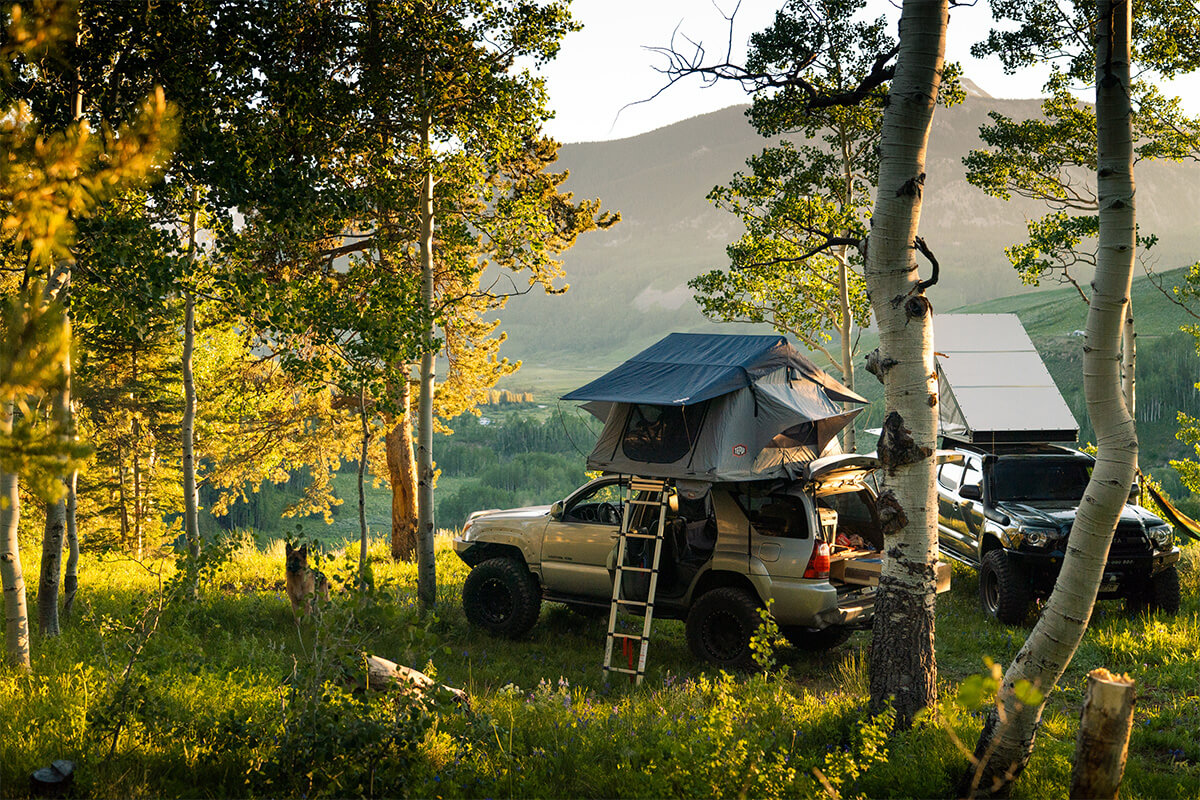
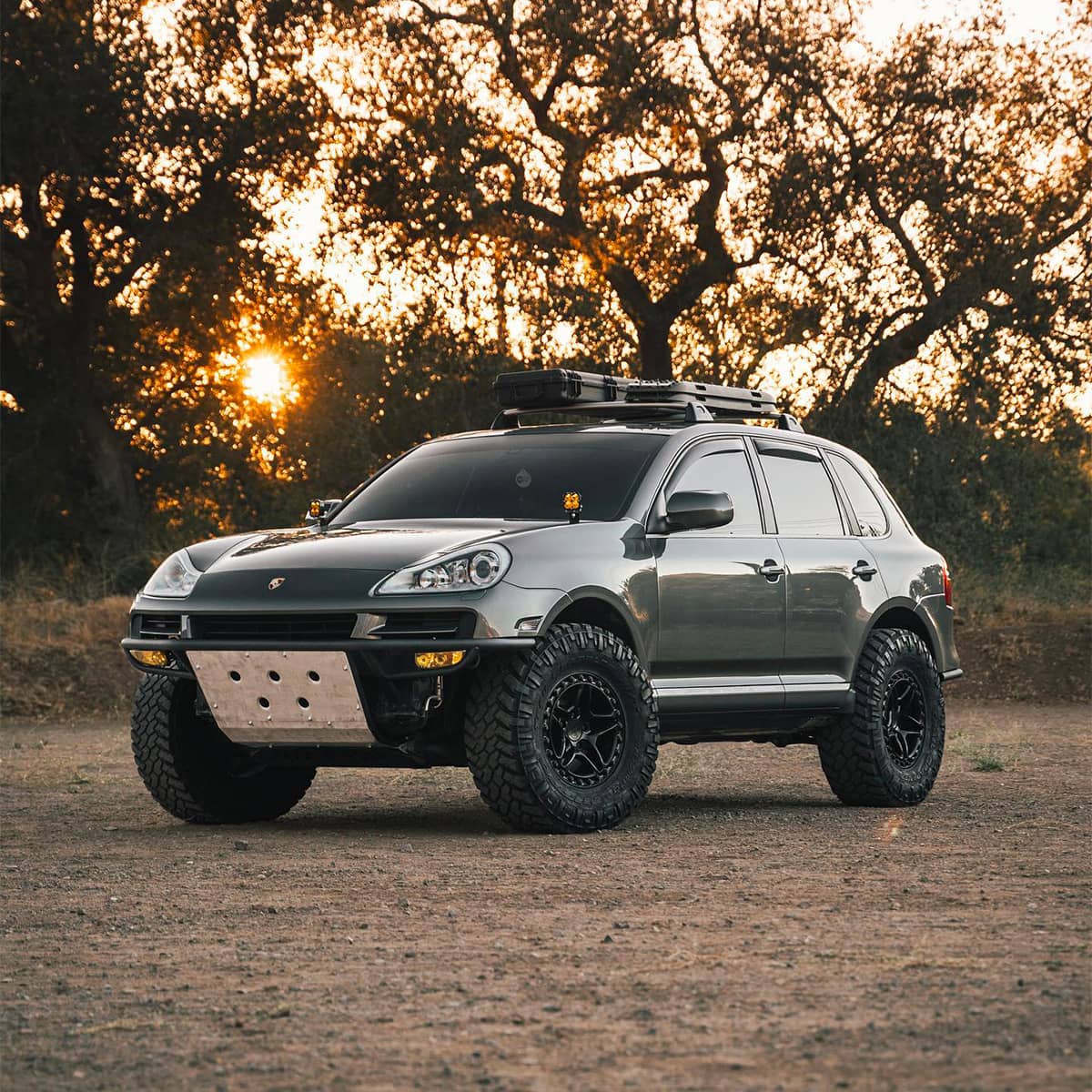
Pros of Used overland vehicles:
- More affordable upfront cost
- Can find well-maintained examples
- Aftermarket parts readily available
- Opportunity to learn wrenching skills
Cons Compared to new vehicles:
- May have undocumented issues
- Higher mileage means more repairs and less reliability
Best for Families
Key Considerations: Seating space, cargo space, safety (NHS), Off-road Capabilities, child seat mounts, organization, privacy.
- Toyota Sequoia
- Ford Expedition
- Chevy Suburban
Pros compared to 4×4 SUV and Vans:
- More passenger room
- Expansive cargo capacity
Cons compared to 4×4 SUVs and Vans:
- Worse fuel efficiency
- Larger size limits trails
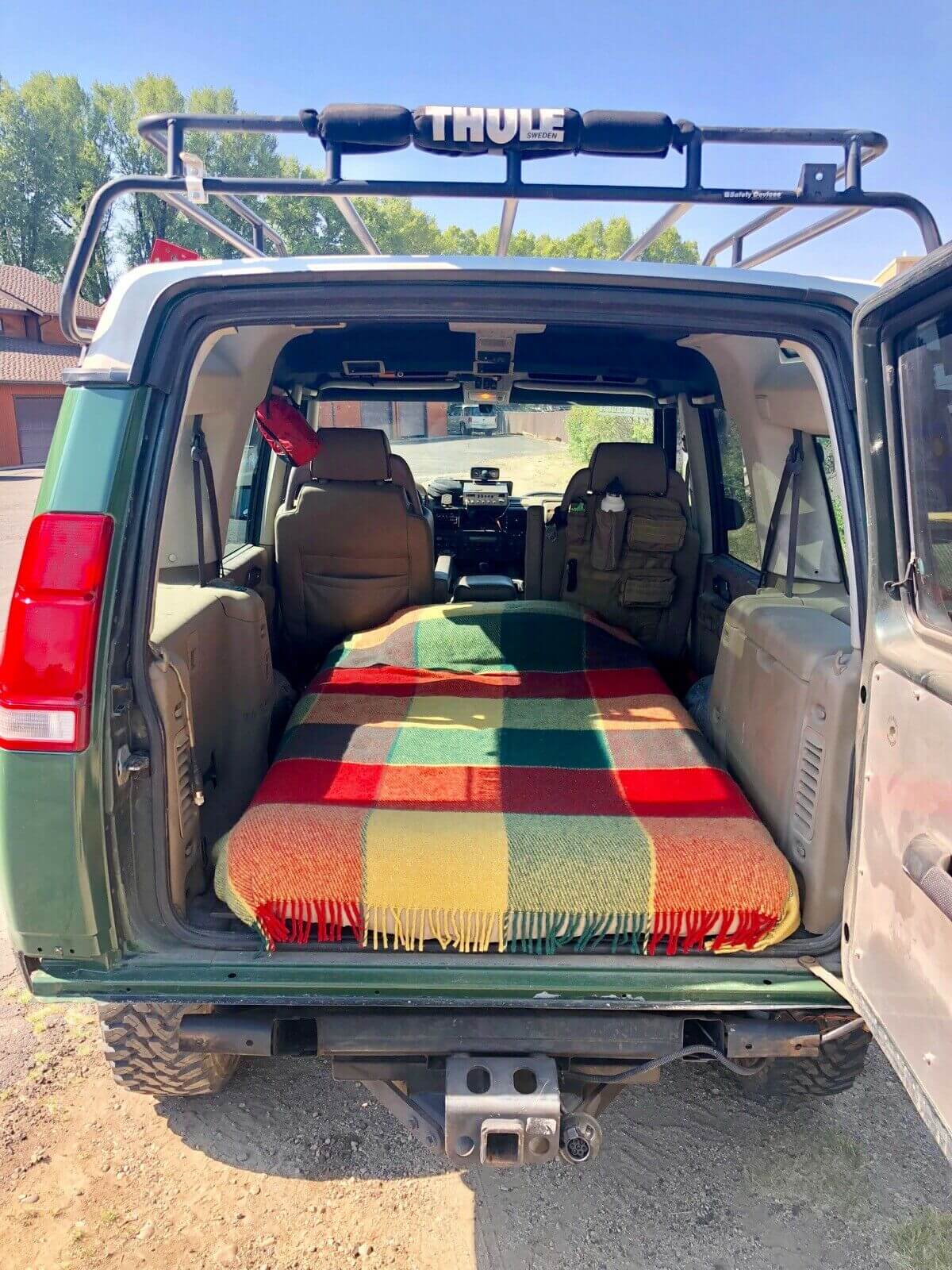
Best To Sleep In & Live In
Key Considerations: flat cargo space when the seats are folded down, cargo space with seats folded flat.
- Subaru Outback
- Toyota Sequoia
- Chevy Tahoe
Pros compared to RTT and ground based Tents:
- Fully enclosed living space
- Stand up headroom
- Indoor kitchen & amenities
Cons compared to RTTs and ground tents:
- More expensive upfront cost
- Worse off-road capabilities
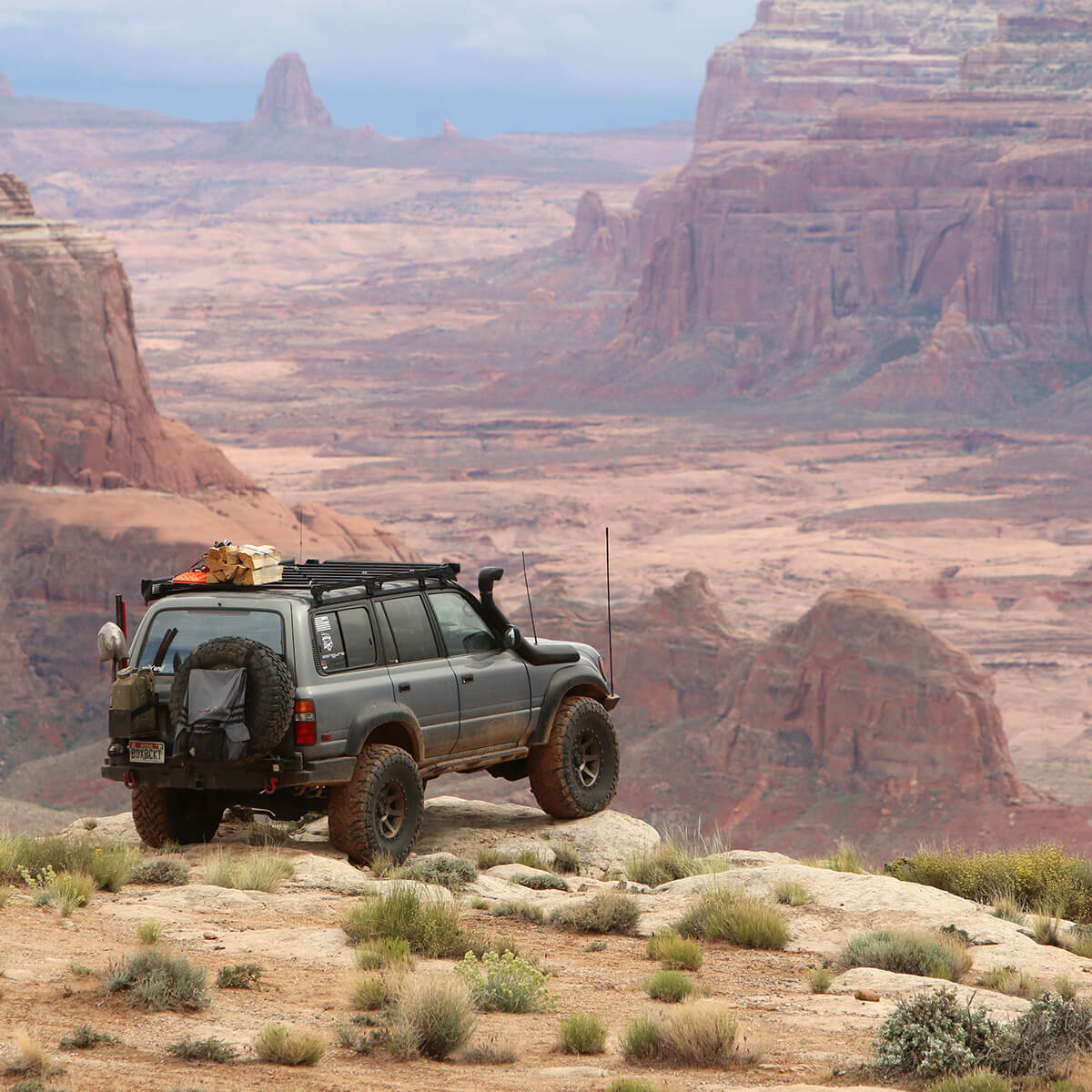
Best Overland Vehicles Of All Times
Key Considerations:off-road heritage, 4×4 capabilities, style, community, aftermarket support. Prioritizing reliability and ease of repair for remote travel, for example, to Africa.
Pros:
- Iconic styling
- Huge aftermarket support
- Excellent off-road pedigree
Cons:
- Outdated comfort and tech
- Less cargo room than newer options
EVs
Key Considerations: Range, charging options, off-road capabilities, cargo space.
The emergence of electric trucks and SUVs has opened up new possibilities for overland travel while reducing environmental impact. Vehicles like the Rivian R1T, GMC Hummer EV, and Ford F-150 Lightning offer 200+ mile ranges and up to 800V fast charging capabilities. While range is lower than gas counterparts, strategic charging stop planning and mobile charging units can enable long distance expeditions. These electric trucks also tout impressive off-road specs like 11″+ ground clearance and tank turn functionality. Cargo and passenger space is on par or better than comparable gas models.
Overall, EV overland vehicles allow for eco-friendly exploration while providing robust utility. As charging infrastructure continues to expand, they will become increasingly viable options for overland travel. Careful route planning and charging equipment is recommended to maximize range and flexibility.
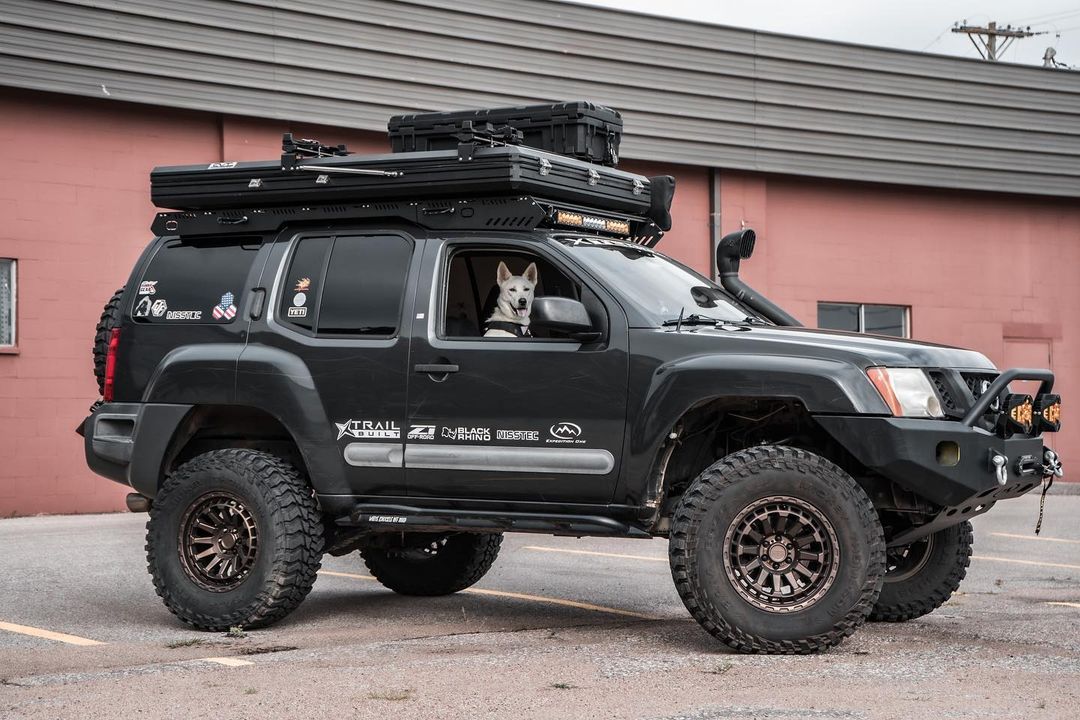
How To Choose The “Best”
The process of finding the ideal overland vehicle is straightforward – the best option is the one that aligns with your key needs and priorities.
“Overlanding is self-reliant overland travel to remote destinations where the journey is the principal goal. Typically, but not exclusively, it is accomplished with mechanized off-road capable transport (from bicycles to trucks) where the principal form of lodging is camping, often lasting for extended lengths of time. – Wikipedia.
Before starting your search, take time to consider the types of off-road travel you want to pursue, the terrain you’ll encounter, who will join you on trips, how much cargo capacity you’ll require, your lodging plans, and typical trip duration.
Evaluating these factors will help you determine the essential features your overland rig should offer. The perfect overlanding vehicle for your adventures may not be the top choice for someone else. Focus on your own intended use and must-have capabilities so you select the right platform.
Key questions to ask yourself:
- What types of off-road terrain do I plan to travel through?
- How many passengers need to fit comfortably?
- What is my required cargo capacity?
- Will I need it to serve as a daily driver?
- How self-sufficient does my vehicle need to be?
- What kind of camping accommodations will I rely on?
Conclusion
Choosing the perfect overland vehicle is an exciting process. This guide covers the capabilities and key factors to evaluate across different platforms. Focus on your own adventure plans and must-have features. With the right rig, you’ll be equipped to explore off-the-beaten-path destinations for years to come!
Matt is a professional mechanic, experienced off-roader, writer and founder of Offroadium. With over 15 years immersed in the off-road community and 100,000+ miles logged on rugged trails across the Americas, Grabli shares extensive real-world knowledge. He previously worked as an automotive technician before shifting focus to specialty off-road projects. His passion is prepping capable rigs for off-roading and helping others to build the 4x4s of their dreams.

